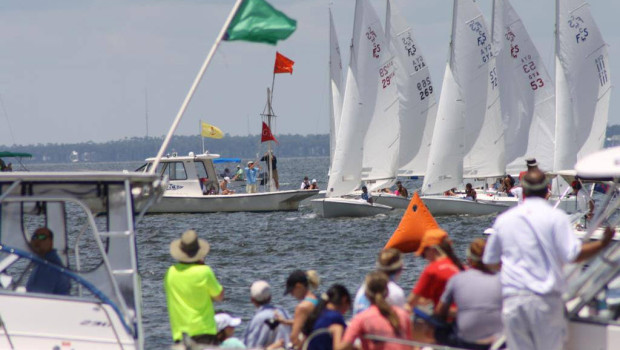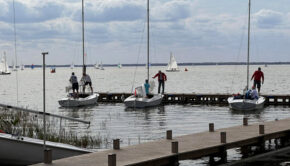Don’t Fear ‘New and Improved’
Published on October 15th, 2015
The Gulf Yachting Association (GYA), which promotes the sport of yacht racing on the Gulf Coast and nearby areas, recently voted to change the boat used for its prestigious interclub Capdevielle Championship from the Flying Scot to the Viper 640. Will people be able to transition from the stoic Scot to the hyper Viper? Viper 640 class officer Justin Scott offers this calming report…
I have a great affection for the Flying Scot and it is not just my name and my shared ancestry with its designer, Sandy Douglass. I have sailed in the Flying Scot North Americans and have many good memories of team racing in the Flying Scot as a guest of the Southern Yacht Club.
While the Gulf Yachting Association has recently voted for the Viper 640 as the likely replacement for the Flying Scot for the Capdevielle Regattas, this is not goodbye to the Flying Scot in the Gulf region. They will not disappear. Many will be used as club trainers and racers for years to come and some of the club-owned boats will fall into private hands. It is a great boat that earned its place in Sailing’s Hall of Fame.
But if anyone thinks the GYA has traded a steady, tactical platform for a tweaky, speed freak, I am here to ease your fears. Let me reassure you that the Viper creates more tactical sailing, not less, and that modern sport boats can be designed to be less tweaky with less emphasis on boat speed and more emphasis on tactics than more traditional boats. The Viper’s design mandate was exactly that.
For many years I raced traditional keelboats and centerboarders. I cannot exaggerate how important tweaking the boat was for every last centimeter of boat speed. The first beat to weather was key, and with skill and determination those skippers with a little something extra would get their bows out and have options that the rest of us didn’t have. Ultimately tactics determined the outcome among the top guys, but you were not even in the running unless you had boat speed.
As Buddy Melges used to say, “Boat speed makes you look like a great tactician.”
The Viper is very tactical the whole way around the race course. It was specifically designed to be simple and easy to sail. There are no tuning advantages to be had and the controls have a Laser-type simplicity to them. More surprising perhaps is that you will find the Viper to be much more sensitive to tactical decisions both upwind and downwind than a more traditional, heavier boat. In a Viper the light displacement means that it is more sensitive to better pressure and more responsive to shifts. The tactical boat speed differential is immediate and noticeable.
No amount of tweaking for boat speed will help me if my favorite nemesis finds a knot or two of extra pressure or a 5 degree favorable shift. It is very feasible to take a few sterns off the start line to get to a quick puff and gain an immediate advantage. Eeking out a straight line boat speed advantage on the long first upwind leg doesn’t work. The tactics continue downwind as the asymmetric chutes mean an end to long downwind processions. Gybing for shifts and pressure are absolutely key. It is as tactical downwind, if not more tactical, than the upwind legs in traditional displacement boats.
The proof, as they say, is in the pudding. There are many more place changes in Viper racing than I ever experienced in any of my previous classes, and it is astonishing what a high percentage of the entire fleet gains a top five finish in major Viper regattas. In the Viper, speed tweaking has been trumped by tactics, and I truly look forward to lending my helm to anyone who wants firsthand proof of this.
I sail in the Masters division in the Viper. We range in age from 55 to 72 years young and we accounted for a third of the entrants at the recent Viper North Americans in Long Beach California. We all agree that the Viper has reignited our joy in one design sailboat racing. But even more important was to see how excited the kids are about racing in the Viper and it was a blast at the prior North Americans to be going head to head against a 16 year old helmsperson.
If GYA’s bold move bridges the generation gap and allows more of our kids to transition from junior sailing programs to adult one design classes, then it will indeed be a turning point that allows us to move the sport toward a healthier future.









 We’ll keep your information safe.
We’ll keep your information safe.